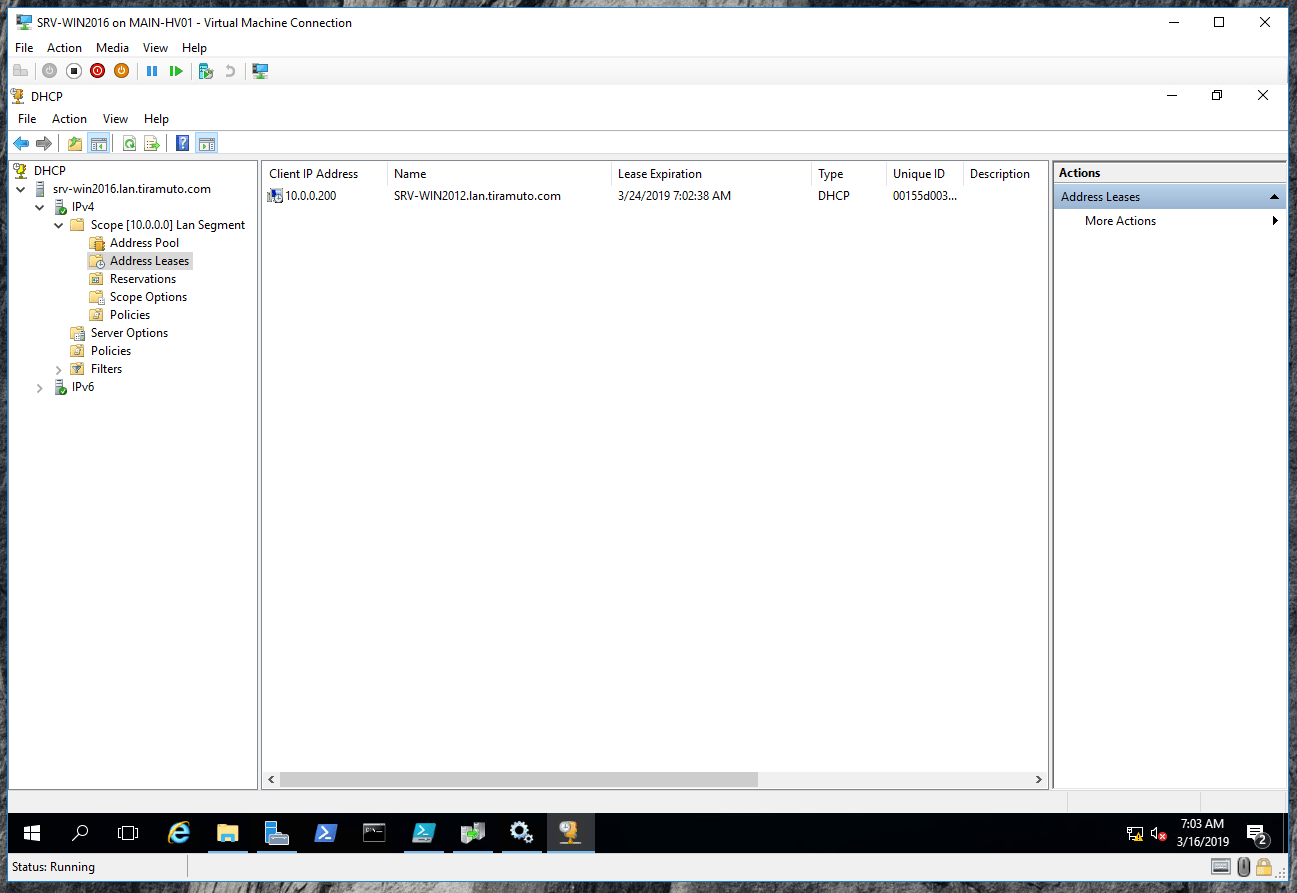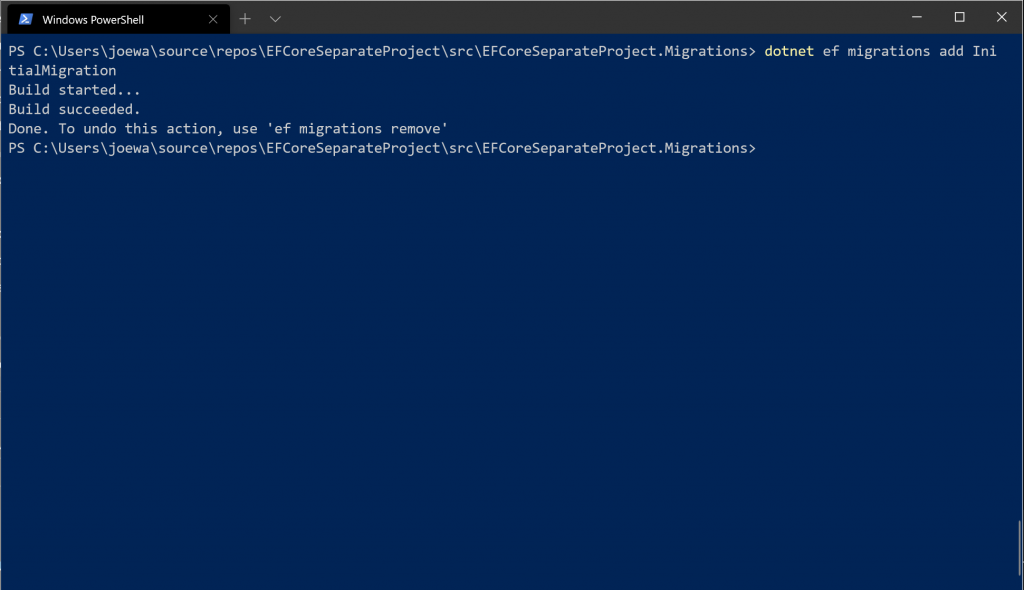

If the Entity Framework migrations are not in sync with the database the application will throw a context change error, the Web application will not run in the local/development machine, and the UI designer (take an UI designer, as an example) is unable to work on the Web site until another team member(s) can help the designer to deploy the database. For instance, some of the team members are experts in UI design or client-side technologies like Angular JS, jQuery, and so forth.

Not everyone on a development team is an expert on managing EF.Pending migrations needs to apply to the database.There is no simple built-in user interface to manage migrations such as these: To deploy/rollback the Entity Framework migrations to a database, developers need to know about the Entity Framework commands like update-database.
#Ef add migration command code
Entity Framework code first provides an abundance of capabilities and advantages for Microsoft developers (I am not covering the Entity Framework advantages in this article). These days, Entity Framework is most popular ORM in Microsoft technologies. In this article, I’ll describe the user interface to deploy and manage Entity Framework migrations for ASP.NET MVC applications. Read on to learn how EFMigrationsManagerUI can help your EF migration workflow. Included exception-handling features ensure that users are given a user-friendly maintenance message if migrations need to be applied, instead of the default ASP.NET error pages. The EFMigrationsManagerUI NuGet package provides an easy way to understand a user interface that your deployment and administrative team can use to verify and apply pending migrations directly from your site. Also, troubleshooting EF issues, such as context change exceptions, can require multiple steps. Name.Although Entity Framework (EF) code first provides good tooling for developers to apply migrations from the command line or Package Manager Console, there is no built-in way to monitor migration status directly from an ASP.NET Web site. It is worth noting the connection string: the MySQL container name is used as server Step 1/5 : FROM microsoft/dotnet:2.0-runtime PS C:\EFCoreDockerMySQL> docker-compose.exe up \EFCoreDockerMySQL\obj\Docker\publish\ -Force -Recurse \EFCoreDockerMySQL\bin\Debug\netcoreapp2.0\publish\. Tutti i diritti sono riservati.ĮFCoreDockerMySQL -> C:\EFCoreDockerMySQL\EFCoreDockerMySQL\bin\Debug\netcoreapp2.0\EFCoreDockerMySQL.dllĮFCoreDockerMySQL -> C:\EFCoreDockerMySQL\EFCoreDockerMySQL\bin\Debug\netcoreapp2.0\publish\ NET CoreĬopyright (C) Microsoft Corporation. Microsoft (R) Build Engine versione 15.3.409.57025 per. Typing the command docker-compose up (as shown below). The latter defines the containers which have to be startedĭocker-compose.yml refers to the Dockerfile contained in the console project.Īnd copying the compilation output in obj/Docker/publish/, thanks to the filesĭescribed above, you can build and run the container from the command line just by Starting with '!'), in the container build process.ĭocker-compose project, which is automatically set as StartUp Project, containsĭocker-compose.yml file. On the folder containing the Dockerfile, should be ignored, or considered (line dockerignore file instructs Docker on which part of the host filesystem, based

Whether the application is executed in release or debug mode. This variable allows to specify different behaviors Source parameter used by the COPY command, which will be actualized during containerīuilding, defines which folder of the host filesystem containing the application The Dockefile describes how the application container will be created.ĮNTRYPOINT dockerignore files to the application project,Īnd a new docker-compose project to the solution. > Docker Support, and choosing Linux ad target OS.ĭoing that VS adds Dockerfile and. Then I enabled the Docker support by right clicking on the project, selecting Add


 0 kommentar(er)
0 kommentar(er)
